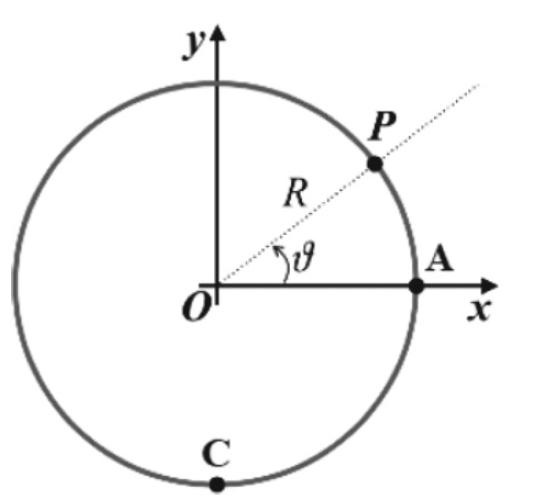A particle (mathrm{P}) is moving on a circumference of radius (R=3.50 mathrm{~m}) according to an angular speed
Question:
A particle \(\mathrm{P}\) is moving on a circumference of radius \(R=3.50 \mathrm{~m}\) according to an angular speed given by \(\omega(t)=k t^{2}\), with \(k=13.18\) degrees \(/ \mathrm{s}^{3}\) and starting from rest. Consider a system of Cartesian axes placed on the plane of the circle, with origin corresponding to the center of the circle and oriented as in the Fig. 3.9 left. The point \(A=(R, 0)\) shown in the figure represents the position of particle \(\mathrm{P}\) at the initial time. Determine:
1. the equation of the angular displacement \(\theta(t)\);
2. the Cartesian coordinates of the point \(B\) where the particle is located at the time \(t_{B}=3.00 \mathrm{~s}\);
3. the time \(t_{C}\) to needed arrive at point \(C\), i.e., the point of Cartesian coordinates \((0,-R)\).
4. the average speed \(v_{m}\) of the particle in the motion between point \(\mathrm{A}\) and point \(\mathrm{C}\);
5. the acceleration vector at the time \(t_{C}\).

Step by Step Answer:






